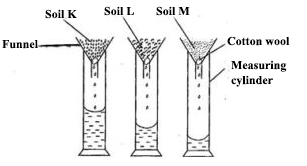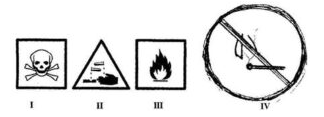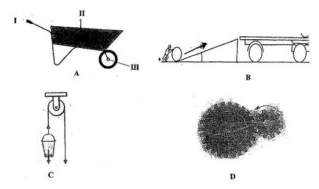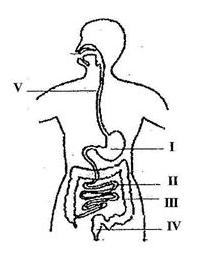ESSAY
This paper is in two parts: I and II. Answer Question 1 in part I and any other four question in part II
PART I
[40 marks]
Answer all of Question 1
-
The funnels in the diagram below contain equal amounts of different types of soil labelled K, L and M. Equal volumes of water were poured onto each soil at the same time and allow to drain for 20 minutes.
Study the diagram carefully and answer the questions that follow.

What is the aim of the experiment?
Which soil has the highest rate of drainage?
Which soil has the highest water retention capacity?
Which soil is most likely to lose water and dry faster after rainfall?
Which soil is most likely to be waterlogged after rainfall?
Which of the soil types would be suitable for maize cultivation?
-
The diagram below illustrates hazard symbols labelled I, II, III and IV.
Study the diagram carefully and answer the questions that follow.

What does each of the symbols labelled I, II, III and IV represent?
-
Name one substance each that is associated with:
α) I;
β) II;
γ) III.
Name the place where the symbol labelled IV is often displayed.
Which of the symbol(s) is/are found on chemical containers?
-
The diagram below illustrations of devices used to do work easily.
Study the diagram carefully and answer the questions that follow.

Give a general name for the devices.
Identify each of the devices labelled A, B, C and D.
-
Name the parts labelled I, II and III of device A when it is considered as a lever.
What does the arrow represent in the device labelled B?
-
Name the type of work done with each of the device labelled:
α) C;
β) D.
-
The diagram below illustrates the digestive system in humans.
Study the diagram carefully and answer the questions that follow.

Name each of the parts labelled I, II, III, IV and V.
-
Name the part(s) of the digestive system where:
α) digestion of food substances occur;
β) digested food is absorbed into the bloodstream.
Name the end-products of the digestion that is absorbed into the bloodstream.